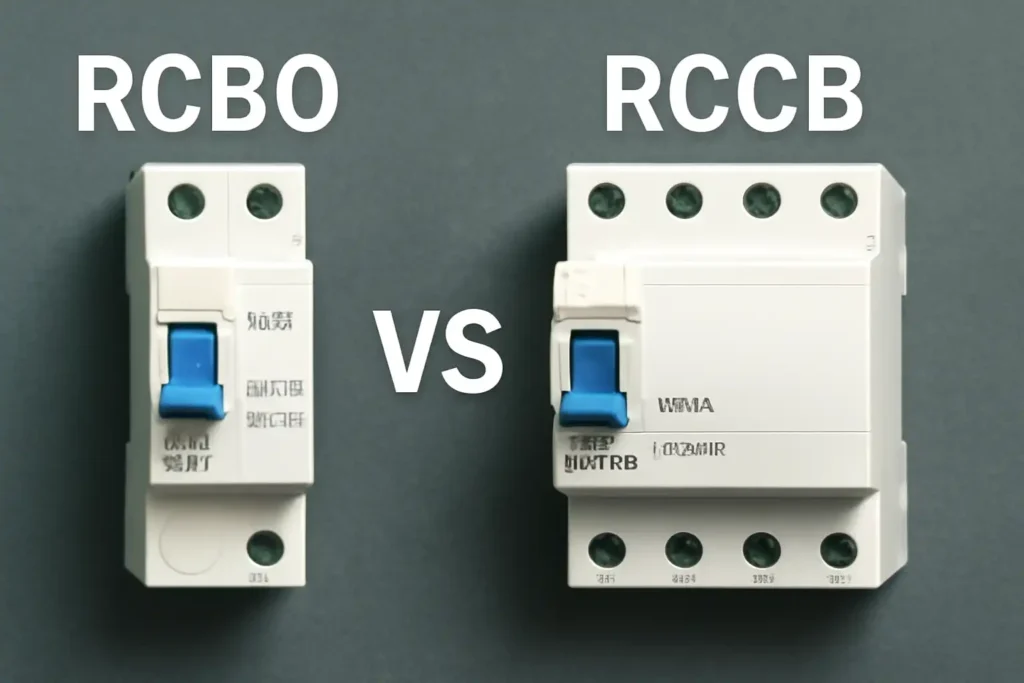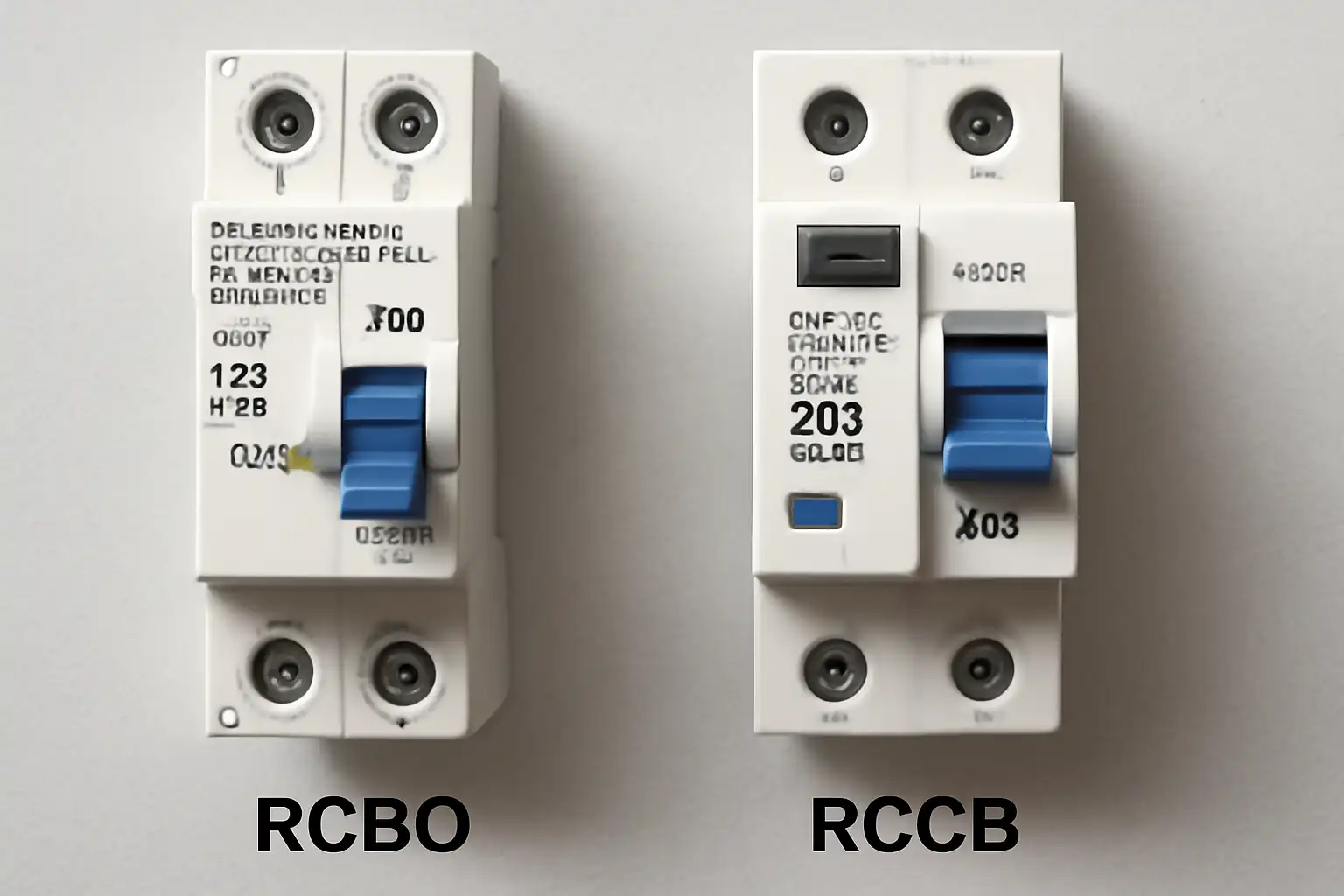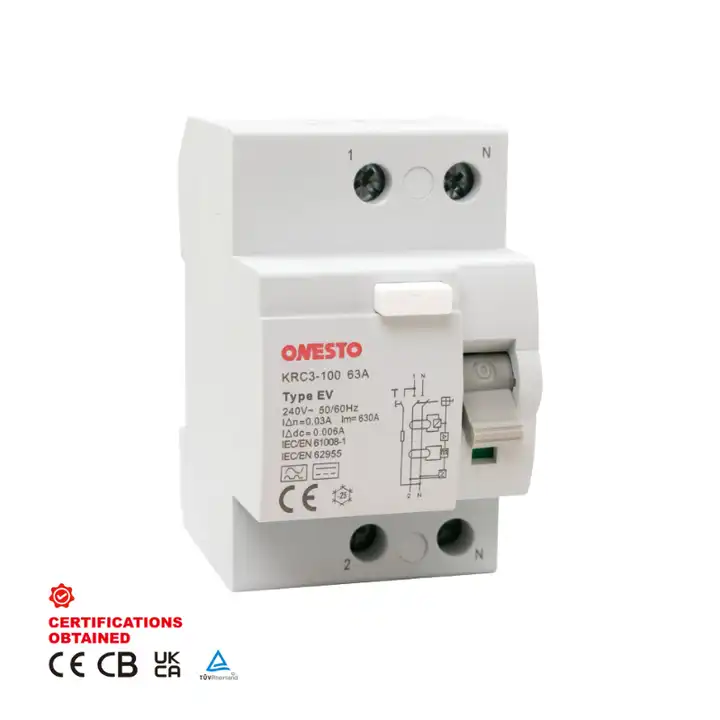Electrical safety tools like RCBO and RCCB keep you safe. Each tool works differently. RCCB stops electricity leaks to prevent shocks. RCBO does more by stopping leaks and controlling too much current. It protects against short circuits and overloads. Pick the right tool based on your safety needs. Knowing how they work helps you choose wisely for your electrical safety.
Key Takeaways
- RCCBs stop electricity leaks, preventing shocks and lowering fire risks. They work well for simple systems.
- RCBOs give two protections: stopping leaks and overcurrent. They are better for complex systems with big appliances.
- Think about your budget and safety needs before choosing. RCCBs cost less, but RCBOs offer better safety.
- Check your electrical panel size before buying. RCCBs are smaller and easier to set up. RCBOs might need more space.
- Always ask a licensed electrician for help picking and installing the right device for safety.
Understanding RCCB
What is an RCCB?
A Residual Current Circuit Breaker (RCCB) stops shocks from electricity leaks. It checks the flow of power in wires. If it finds a problem between live and neutral wires, it cuts off the electricity. RCCBs are used in homes, offices, and factories to keep people safe.
Did you know? Electrical problems cause about 30% of fires. RCCBs help lower this risk by stopping dangerous leaks.
More people are buying RCCBs now. The market may grow from USD 3.5 billion in 2024 to USD 5.8 billion by 2033. This is because people care more about safety and wiring is getting more complex.
How does an RCCB work?
RCCBs work using a simple idea. Power going through the live wire must match power returning through the neutral wire. If there’s a fault, less power returns, causing a difference called residual current.
An electromagnet inside the RCCB watches for this difference. If it gets too big, the device shuts off power in under 0.1 seconds. This quick action stops shocks and lowers fire risks.
For example, hospitals use RCCBs to protect patients and staff. They catch even small leaks and fix them fast.
Key functions and benefits of RCCB
RCCBs have many benefits that make them important for safety:
- Shock Prevention: They stop electricity quickly when leaks happen, preventing shocks.
- Fire Risk Reduction: By stopping leaks, they help prevent electrical fires.
- Wide Application: They work well in homes, offices, factories, and hospitals.
- Ease of Use: RCCBs are small and easy to set up anywhere.
Tip: Using lots of devices? An RCCB can protect your gadgets and wires from faults.
Studies show RCCBs work well even in tough places. For example, research at La Fe Hospital in Spain showed how RCCBs solve tripping problems with electronic devices.
Understanding RCBO
What is an RCBO?
A Residual Current Breaker with Overcurrent (RCBO) is a safety tool. It combines two protections in one device. It stops electrical leaks like an RCCB and also handles overcurrent. Overcurrent happens during short circuits or overloads. This makes it useful for homes, offices, and factories.
RCBOs come in different types, like single-pole and neutral (1P+N) or three-pole and neutral (3P+N). These types fit various electrical systems. They follow global rules like IEC60898 to work reliably.
Tip: Need one device for leaks and overcurrent? Choose an RCBO.
How does an RCBO work?
RCBOs check electricity flow in a circuit all the time. They find two problems: leakage current and overcurrent.
- If leakage current goes over the limit, the RCBO cuts power. This stops shocks and fire risks.
- If there’s too much current, it trips to protect wires and devices.
RCBOs work alone, even in tough conditions. They handle short-circuit currents up to 6000A. They also cut power in under 0.1 seconds if leakage happens.
Key functions and benefits of RCBO
RCBOs have many benefits that make them great for safety:
- Dual Protection: They stop leaks and overcurrent in one device.
- Versatility: Different types fit many electrical setups.
- Enhanced Safety: They act fast to stop shocks, fires, and damage.
- Durability: They last long, with 1500 electrical and 8500 mechanical uses.
| Parameter | Value |
|---|---|
| Rated current (In) | 63, 80, 100 |
| Rated sensitivity (I∆n) | 0.03, 0.1, 0.3A |
| Rated short-circuit capacity (Icn) | 6000A |
| Break time under I∆n | ≤0.1S |
| Protection degree | IP20 |
RCBOs are perfect where both leak and overcurrent safety are needed. They work well for homes and businesses, giving peace of mind.
Comparing RCBO and RCCB
Functional differences: Leakage vs. Overcurrent Protection
Choosing between RCBO and RCCB depends on their main jobs. RCCB only finds electrical leaks. It stops shocks and lowers fire risks from bad wiring or broken devices. But it doesn’t handle too much current.
RCBO does both jobs. It stops leaks and also protects against short circuits and overloads. This makes RCBO a better choice for homes and businesses needing more safety.
Tip: Need protection from both leaks and overcurrent? Pick an RCBO. For simpler setups, RCCB works fine.
Cost comparison
Price matters when picking between RCBO and RCCB. RCCBs cost less because they only stop leaks. They’re good for basic systems with low overcurrent risks.
RCBOs cost more since they do two jobs. The higher price is worth it for complex systems. They save money later by protecting devices and wires from damage.
| Device Type | Average Cost Range |
|---|---|
| RCCB | $20 – $50 |
| RCBO | $40 – $100 |
Note: Spending on the right device keeps you safe and lowers repair costs. Think about your budget and safety needs before buying.
Size and installation considerations
RCCBs are small and easy to set up. They fit well in tight spaces, making them great for small homes.
RCBOs are a bit bigger but offer more features. They might need more room in your panel. Newer RCBOs are made to save space and fit most setups.
Tip: Check your panel size before buying. Make sure the device fits and meets your safety needs.
Applications: When to use RCBO vs. RCCB
Picking between RCBO and RCCB depends on your safety needs. Each device works best in certain situations. Knowing their uses helps you choose wisely.
When to Use RCCB
Use an RCCB if your main goal is stopping shocks. It’s perfect for places with low overcurrent risks. Common examples include:
- Residential Homes: Simple setups without big appliances need RCCBs for safety.
- Offices: Standard equipment like computers and lights work well with RCCBs.
- Outdoor Areas: Water increases leakage risks, so RCCBs are great for gardens or pools.
Tip: Pair an RCCB with a circuit breaker to handle overcurrent.
When to Use RCBO
Choose an RCBO for both shock and overcurrent protection. It’s ideal for complex wiring or powerful devices. Use RCBOs in these cases:
- Modern Homes: Homes with many appliances, like ACs, need RCBOs.
- Commercial Buildings: Heavy machines and equipment require RCBOs for safety.
- Critical Areas: Hospitals and labs need RCBOs to protect sensitive tools and people.
Key Considerations
- Budget: RCCBs cost less and suit basic setups. RCBOs cost more but offer better safety.
- Space: RCCBs are smaller. Check if an RCBO fits your panel.
- Risk Level: High overcurrent risks need RCBOs. Low-risk areas can use RCCBs.
Note: Always ask a licensed electrician for advice and proper setup.
By learning the strengths of RCBO and RCCB, you can pick the right one. Both are important for keeping your electrical system safe.
Choosing the Right Device
Factors to consider when selecting RCBO or RCCB
Picking between RCBO and RCCB depends on your setup. Here’s what to think about:
- Type of Protection Needed
Look at your risks. RCCB stops leaks only. RCBO handles leaks and overcurrent. - Electrical Load
Check your devices. Big appliances need RCBOs. Small setups work with RCCBs. - Budget
Money matters. RCCBs cost less for basic systems. RCBOs cost more but save money later. - Space in the Distribution Board
Check your panel size. RCCBs fit small boards. RCBOs need more room but fit most setups. - Environment
Think about the location. Wet areas need RCCBs. Complex indoor wiring needs RCBOs.
Tip: Ask an electrician to help you choose and install the right device.
RCBO and RCCB are important for electrical safety. RCCB stops electricity leaks to prevent shocks and fires. RCBO does more by stopping leaks and handling too much current. It protects devices from overloads and short circuits. To pick the right one, think about your needs. Check what protection you need, your budget, and how complex your system is. Knowing these tools helps you choose wisely for safety at home or work.
FAQ
What is the main difference between RCBO and RCCB?
An RCCB stops electricity leaks to prevent shocks. An RCBO does this too but also stops overcurrent, like short circuits or overloads.
Can you use RCBO and RCCB together?
Yes, both can work in one system. RCCB stops leaks, while RCBO adds protection from overcurrent for certain circuits.
How do you know which device to choose?
Think about your setup. Use an RCCB for simple systems with low overcurrent risks. Pick an RCBO for systems with big appliances or complex wiring.
Are RCBOs more expensive than RCCBs?
Yes, RCBOs cost more because they do two jobs. But they save money later by protecting devices and wires from damage.
Do RCBOs and RCCBs need regular maintenance?
Yes, both need regular checks to work well. Test them every month using the “Test” button to make sure they trip properly.
The following information may be of interest to you
How to choose a household residual current circuit breaker
Top 8 Residual Current Circuit Breaker Brands for Home Safety
What Are Residual Current Circuit Breakers and How Do They Work





